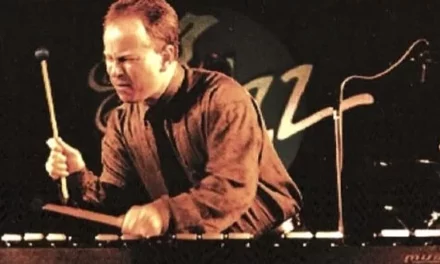Russian history from 1860 to 1920 can pretty much be summed up in a few words: war, famine, corruption, revolution, and cold. Wars such as the Russo-Turkish War, the Russo-Japanese War, and World War I cost Russia millions of lives within a short period; assassinations of Czars and revolution produced a constant state civil unrest; famine dominated and recurred; and Stalin’s reign hovered in the near future.
As always, a country’s history can be better understood through its music, and the Charlotte Symphony, conducted by Christopher James Lees, allowed its audience to understand some of the Russian experience through its all-Russian program of “phantasmagorical storytelling” on Oct. 18 at the Belk Theater. The CSO presented four pieces featuring Stravinsky’s Suite from The Firebird. Each piece revolved around a particular tale or magical theme, recognizing the trials of its time and country whilst remembering to hope and dream.
The concert opened with Modest Mussorgsky’s “Night on Bald Mountain” (1867), the dramatic tone-poem which was made especially popular after its feature in Disney’s Fantasia. In Fantasia, “Night on Bald Mountain” narrates the release of all things evil across a village at nightfall. Bold and dark brass emerge from below and woodwinds cackle, accented by running strings and striking percussion. The piece is supposed to be scary: Mussorgsky wrote it to describe a Russian legend of a Witches’ Sabbath, including a scene of a praise of Satan (who makes an appearance on the mountain). The CSO did well in its interpretation with eerily dynamic contrast and sharp accents. There were only a few times when musicians did not begin or end notes together, resulting in less crisp transitions.
Despite all the fear and creepiness evoked in “Night on Bald Mountain,” the ending of the piece is quite touching. A light church bell rings in the distance, and dawn awakens with gentle melodies of harmonized woodwinds and horns. Evil is certainly apparent, but Mussorgsky also shows that Good exists and has the final word in the end.
Alexander Glazunov’s “Stenka Razin” (1885) followed the Mussorgsky with similarly dark bass and brass-heavy themes juxtaposed with light melodies from the woodwinds. “Stenka Razin” follows the story of the Cossack of the same name who lived from 1630 to 1671, revolted against the Czar, and was eventually executed. The piece is exciting and emotionally all over the place: from triumphant march-like sounds from the whole orchestra to a sinister bass theme and a lovely and moving clarinet solo, the audience is taken on a rollercoaster through Stenka Razin’s adventures. Similar to that of Mussorgsky, Glazunov’s piece emphasizes drama with fear and darkness holding prominent roles. Also similar to Mussorgsky, Glazunov is able to present Good (perhaps through the clarinet feature) as a character and hope as a sensibility.
Following intermission was a short and pretty piece by Anatoly Liadov called “The Enchanted Lake” (1909), which subtly describes the magic of a lake, both beautiful and mysterious. In both this and the Glazunov, the Symphony was effective in its portrayal, with specific highlights from soloists, such as that of the clarinet in “Stenka Razin.”
Finally came the main event: Stravinsky’s Suite from The Firebird (1919). Stravinsky was commissioned to write Firebird by Sergei Diaghilev for his Ballets Russes. The piece premiered in its entirety with the ballet in Paris in 1910; three different versions of the Suite were later created by Stravinsky.
The story follows a Russian folk legend about a Prince Ivan who encounters and captures the enchanting Firebird. Having mercy, he sets her free, and the Firebird, in gratitude, grants the Prince one of her feathers with a promise to help him in a time of need. Needless to say, the Prince one day finds himself in need and the Firebird is there to rescue him.
The Suite from The Firebird begins with ascending and descending bass and horns in suspenseful crescendos and decrescendos. Soon afterwards enter staccato-ed woodwinds and high brass and trembling violins as Prince Ivan walks the forest at night. Once again, as with the previous composers, there is a prominence of darkness and the music is even, at moments, scary.
There is a whirlwind of woodwinds and strings when the Firebird is first captured, but when she is released, a flute begins that sensitive and overwhelmingly beautiful theme which defines the piece. This theme of the Firebird recurs many times, varying in instrumentation, tempo and dynamic. At the end of the piece, it is declared by the entire orchestra.
The CSO was at its height during this final and featured piece, filling up the room with expressivity. Stravinsky’s Firebird was created for dance, and it is practically impossible not to move along to it, especially during the accents and breath-taking swells of this magnificent ending. The Suite from The Firebird was captivating through and through; the only things missing were dancers. (It would be wonderful to one day have the Symphony pair with Charlotte Ballet to produce the full production.)
It’s clear that each composer of this evening recognized the trials of his generation and thus reflected it in his music: fear and uncertainty linger and evil is evident, even at times dominant. At the same time, not a single one in all of his mystery and darkness forgot to include the beauty and imagination that is equally a part of life, and the hope that is essential. Tolstoy is quoted as saying “there is something in the human spirit that will survive and prevail; there is a tiny and brilliant light burning in the heart of man that will not go out no matter how dark the world becomes.” The Charlotte Symphony was able to access both a lingering darkness and this prevailing light in The Firebird and each of its accompanying pieces.
They will continue with this program for one more night, Oct. 19, at 7:30pm. See our sidebar for details.











